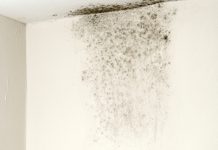BSRIA’s Blanca Beato-Arribas highlights the role that humidity plays in assuring the well-being of building occupants
In the UK we spend over 80 per cent of our time indoors and with approximately 90 per cent of the associated costs of a building being staff related (according to Wellbeing and productivity in Offices report from the World Green Building Council’s Health, 2014 ), providing good indoor environmental quality is essential.
The recommended levels of humidity vary depending on the application (offices, data centres, hospitals). In some industrial applications (heritage, storage), moisture stability is essential for preservation. In offices, the accepted levels of humidity may range between 40 and 60 per cent.
As a standalone parameter, humidity is unlikely to cause thermal discomfort and levels outside the 40-60 per cent range can easily be tolerated. The BS EN ISO 7730: 2005 Ergonomics of the thermal environment, suggests that a 10 per cent increase in relative humidity is felt to be as warm as a 0.3°C rise in the operative temperature. The human perception of dry air is generally due to contaminated or too warm air rather than physical dryness and air with high humidity is often perceived as odorous.
Blanca Beato-Arribas, Asset Performance Team Leader, BSRIA, said:
“Humidity extremes are undesirable and affect human comfort, productivity and health. Long periods of exposure to humidity levels under 35 per cent should be avoided as they can cause eye irritation, throat and nose dryness. This is a common occurrence in aircraft, where humidity levels can be as low as 20 per cent. Low humidity levels can also increase static electricity, which is a bigger cause of concern in data centres, where equipment can be damaged or in places where there might be a risk of gases igniting.
“At the other end of the spectrum, high levels of humidity encourage bacteriological and mould growth and increase the chemical and sensory emission from water borne building varnish and paint (9), contributing to poor indoor air quality.
“In summary, controlling the humidity levels and regular maintenance of the systems in an office building will avoid future costly problems related to mould growth and also contribute to the well-being and productivity of the occupants.”
For more information, please visit the BSRIA website
















